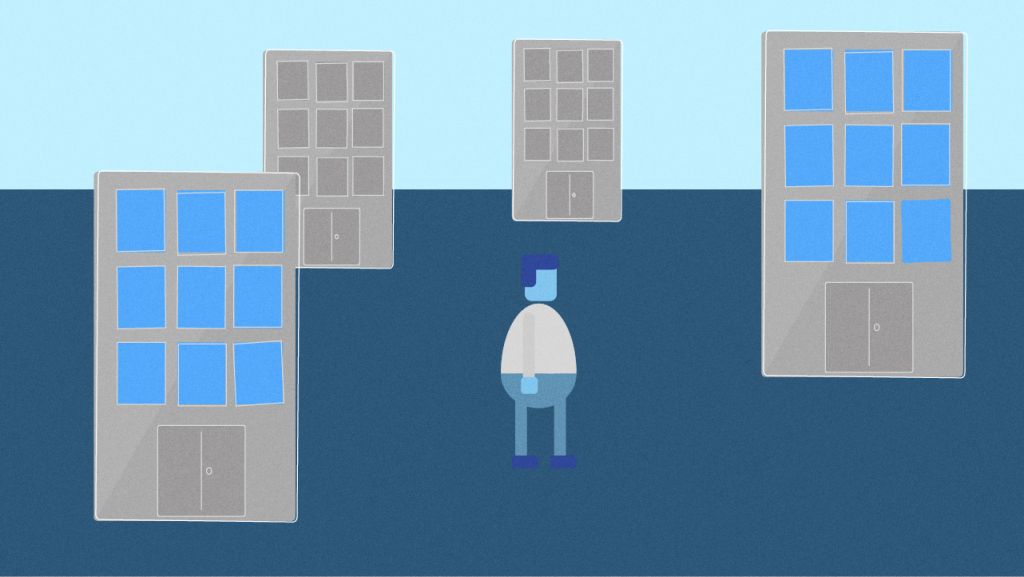The Asylum System in Germany
Back to: The Asylum System and Its Functions
Practical insights
We asked volunteers working in the field of migration what they think about the german asylum system. Watch now!
The asylum system in Germany is indeed not easy to understand, especially because its details change very often and there are many terms and conditions you have to be aware of. Of course you are not supposed to be an expert in this field. Nevertheless we want you to be familiar with basic aspects so that you better understand the system and its consequences.
Basic steps
The following is an overview of the basic steps in the German asylum system1. Simply click on the containers to view the details of these steps.
Before anything else can happen the asylum seeker needs to report him/herself to the authorities and make his/her wish of asylum known. He can do that directly at the border or at a reception center/refugee camp. Furthermore asylum seekers can be registered at PIK-stations (Personalization and infrastructure component).
The proof of arrival documents (AKN)
Registrating asylum seekers is important in order to get some points of reference points on who is seeking asylum. Because of that a preliminary identification papers are issued the “proof of arrival documents”. It encompasses:
- the finger print (exempt children under the age of 14)
- a passport photograph
- personal data
All agencies are connected and share the data. That way multiple registrations are avoided. In addition the agencies are able to find out if the asylum seeker is already seeking asylum in another country or is registered there.
Furthermore a safety check of the applicant is executed.2.
The registrations main aim is not to give the authorities an overview, but to give the asylum seekers the possibility to take advantage of certain requirements, such as:
- provisions
- medical care
- housing

© Institut für Lern-Innovation
With the help of the Konigsteiner Schlussel the asylum seekers are distributed evenly throughout Germany and according to that taken in at the initial reception centres. In these centres the asylum seekers get a health check. They have to stay in the initial reception centre for up to 6 months.

© Institut für Lern-Innovation
The application for asylum has to be made personally at the BAMF (Department for migration and refugees). The asylum seeker is given an appointment. At the appointment an interpreter is present. There are 40 interpreters at every initial reception center.
At this appointment important data is collected and processed and new, preliminary identification papers, the Aufenthaltsgestattung (= temporary permission to stay), are issued.
Important: The Residenzpflicht is upheld, meaning that the temporary permission to stay is only effective in a certain, fixed part of Germany.

© Institut für Lern-Innovation
A country, most of the time the country of first arrival, now examines the application. If the country of first arrival is not Germany the applicant is transferred to that country. One can sue against the transfer if there are reliable indications that the applicant might be treated there contrary to the human rights or the asylum process is inadequate.

© Institut für Lern-Innovation
If Germany is the country of first arrival and therefore responsible for processing the application, an invitation to a personal hearing is issued. The applicant is not alone, a translator will be by his/her side.
Since this is the most important step in the asylum process it is wise to get help from relief organisations, local aides etc. and to be really prepared. It is important to be punctual and if the applicant is sick to provide the BAMF with a medical certificate!
In the hearing the asylum seeker has to detail the reasons for his claim, preferably in a structured and logical manner, without any contradictions. A staff member of the BAMF, the so called “Enscheider” (= decision maker), will be present, too.
The entire hearing is protocolled and made available for the applicant.

© Institut für Lern-Innovation
The decision is not an instant one, it is made after a thorough examination of the application. The staff member of the BAMF might rank the applicant according to the different protection status.
The BAMF:
- verifies the claims made about the situation in the home country
- verifies the history of the applicant (are there any contradictions?)
- checks if ID-papers, other evidence is real
A the end of this process the applicant is disclosed the decision in writing.
If the application is denied the applicant has to leave the country. However, it is possible to file a lawsuit against that decision. If the asylum seeker does not leave the country free-willingly, the federal police force takes charge of the deportation.